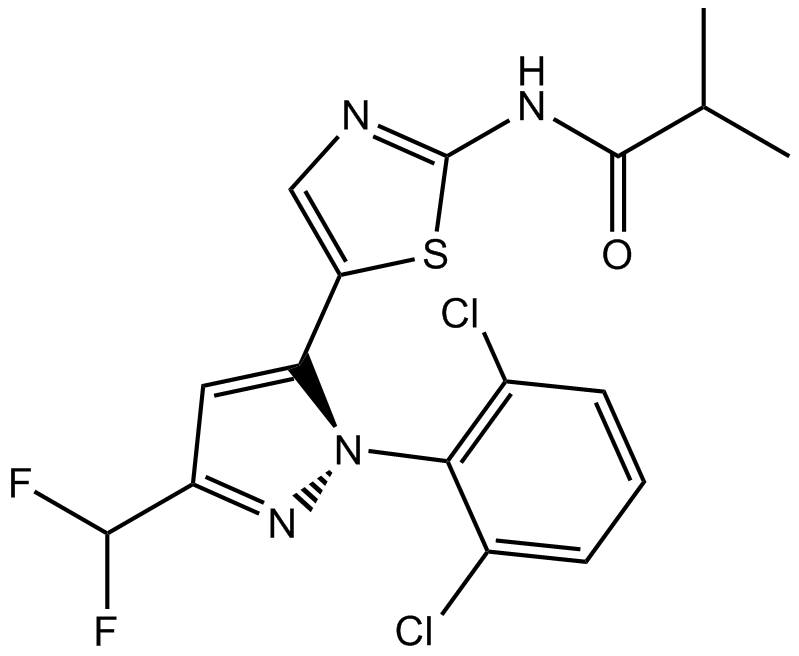LIMKi 3 (Synonyms: LIM Kinase Inhibitor I, LIMKi 3) |
| Catalog No.GC15511 |
LIMKi 3 (LIMKi 3) is a potent LIMK inhibitor with IC50s of 7 nM and 8 nM for LIMK1 and LIMK2, respectively.
Products are for research use only. Not for human use. We do not sell to patients.

Cas No.: 1338247-35-0
Sample solution is provided at 25 µL, 10mM.
LIMKi 3 is a novel small molecule inhibitor of LIMK1 and LIMK2 with IC50 values of 7 and 8 nM, respectively [1].
LIM kinase (LIMK) includes LIMK1 and LIMK2, which regulate the actin polymerization mediated by the Rho family (Rho, Rac, and Cdc42) and the actin cytoskeleton by phosphorylating and inactivating the cofilin family of actin-depolymerizing factors. The functions of LIMK contribute to its irreplaceable effects in cell movement, division and structure formation[1] [3].
In vitro: In human breast cancer cells MDA-MB-231, treatment with LIMKi 3 (0~10 μM) resulted in the inhibition of LIMK activity and cofilin phosphorylation in a dose-dependent manner, induced a reduction in F-actin signal intensity and serum-stimulated SRF activity. LIMK inhibition also reduced matrigel invasion in three-dimensional invasion assays, but had no effect on microtubule number or organization and wound healing. Although motility was unaffected, LIMK inhibition by LIMKi 3 impaired matrix protein degradation[2].
References:
[1] Ross-Macdonald P, De S H, Guo Q, et al. Identification of a nonkinase target mediating cytotoxicity of novel kinase inhibitors.[J]. Molecular Cancer Therapeutics, 2008, 7(11):3490-3498.
[2] Scott R W, Hooper S, Crighton D, et al. LIM kinases are required for invasive path generation by tumor and tumor-associated stromal cells.[J]. Journal of Cell Biology, 2010, 191(1):169-85.
[3] Jia R X, Duan X, Song S J, et al. LIMK1/2 inhibitor LIMKi 3 suppresses porcine oocyte maturation[J]. Peerj, 2016, 2016(10).
Average Rating: 5 (Based on Reviews and 18 reference(s) in Google Scholar.)
GLPBIO products are for RESEARCH USE ONLY. Please make sure your review or question is research based.
Required fields are marked with *




















